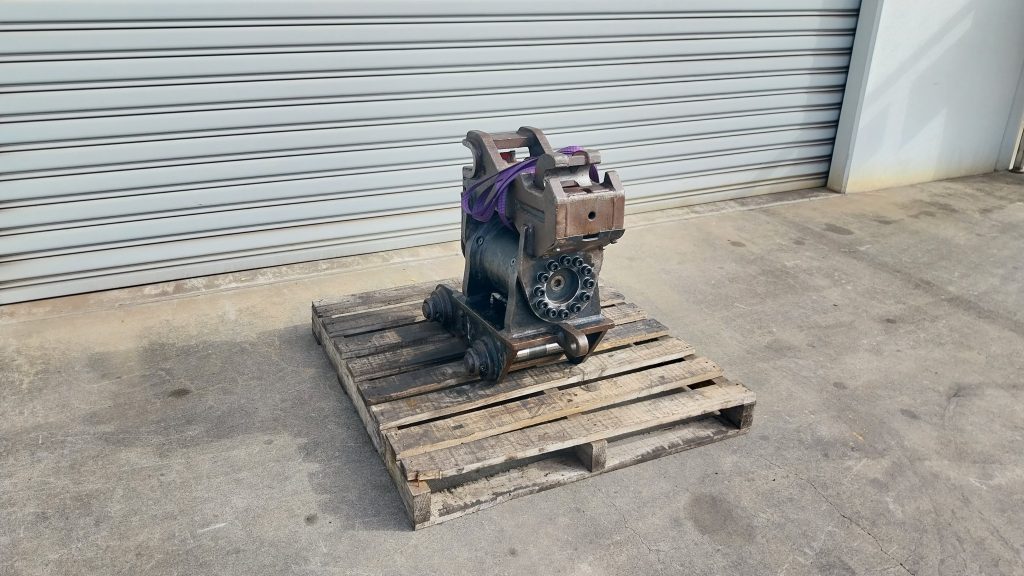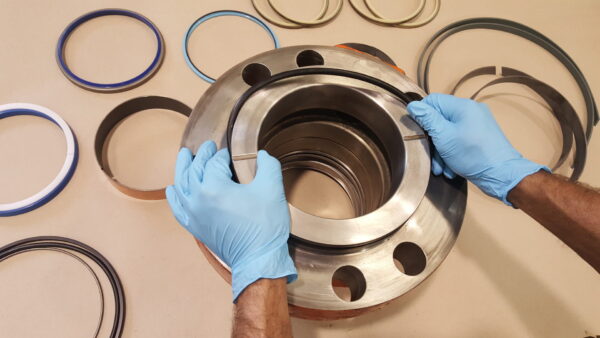When a tilt coupler starts to fail, it rarely fails small. It steals the new coupler feel, eats productivity, and quietly inflates your costs. The good news: most of those failures aren’t sudden. They’re predictable, preventable, and measurable.
Here are three secrets you can act on this week to extend tilt coupler life, stay in your warranty, and stop downtime from becoming a habit.
And as always, you must read and follow the tilt coupler and machine safety instructions and all site rules before doing any maintenance.
Secret #1: Treat the Actuator Oil Like Lifeblood
What to do: Displace the actuator oil on a schedule. It’s recommend to cycle the rotary actuator regularly, especially if you don’t have a built-in rotary actuator relief valve and haven’t used the tilt function for a while. Do at least 6 full pivots a month.
Why it matters: Each full left-to-right pivot circulates the oil and moves any microscopic metal particles and contaminants through the actuator’s tight clearances. Over time any of settled particles act like abrasive grit against seals and metal-to-metal contact surfaces. Fresh oil moves away contaminants and reduces wear. It’s the single easiest action that slows degradation and prevents internal wear from accelerating.
Warranty advantage: You’re making sure that there is “fresh” oil in the Tilt Coupler, not stagnant.
Secret #2: Unlock Daily
What to do: At the end of each shift, unlock the coupler.
Why it matters: Locking mechanisms and wedge surfaces trap dirt and debris. If the coupler is left locked and not cleaned for long periods, components can bind and require excessive pressure or force to free. After a quick inspect, unlocking the coupler keeps working parts moving and prevents contamination from packing into a cemented mess. It’s a tiny habit with positive results.
Warranty advantage: Damage caused by forced unlocking or heavy-handed rescue attempts is a common warranty exclusion. Daily unlocking prevents those expensive operator errors.
Secret #3: Oil Temperature Within The Sweet Spot
What to do: Check what your machine’s hydraulic system oil is operating within. Then compare it to what your tilt hitch’s recommended operating temperature range is. For example, your system oil may spike to 65°C – 70°C.
Why it matters: Seal materials and oil viscosity behave differently outside their recommended temperature range. Cold temperatures cause viscosity increase, cavitation risk, and can cause moisture ingress; very hot oil affects seal integrity, accelerates oil oxidation and varnishing, and increases leak risk.
Warranty advantage: Operating outside specified temperature ranges is listed as damage. If your Tilt Coupler manual states its maximum allowable operating temperature is 60 degrees, and your system spikes over that, then this will instantly void warranty.
Making sure that you are operating in the temperature range protects both your tilt coupler warranty AND your earthmoving machine.
Quick Cab Checklist
• Oil Displacement: 6 full pivots / month
• End-of-shift unlock: 30 seconds coupler cycles
• Max. oil temperature: 60°C
Small actions + simple checks = big warranty protection and longer coupler life.
What Happens Most Of The Time
These three secrets aren’t just tips. They’re targeted responses to the exact failure modes that turn a great tilt coupler into a costly replacement: contamination, seized locks, and thermal problems.
Here’s the thing: most of the time, these issues are barely mentioned (if they’re raised at all) and rarely followed up. That silence works in someone else’s favour. When you void warranty, that’s a win for the seller, because now you’re on the hook for a $8,600+ replacement… and that’s before you factor in additional losses.
If you own a tilt coupler and looking to double its working life, you can get your free guide here: “14 Rock-Solid Strategies To Double Tilt Coupler Life”.
Got a Leaking or Failing Tilt Coupler?
Every hour you keep running it like that is costing you. More wear inside, more lock issues, more downtime waiting to happen.
Once a tilt coupler starts leaking or loosening up, it won’t repair itself.
We offer in tilt coupler reseals and repairs. In-house overhauls that bring them back to tight, reliable, work-ready condition — without the massive replacement bill.
Click here to get your Tilt Coupler repaired right and put a stop to the leaks, rattles, and lost hours before they get worse.
Written by The A1HE Team
Date: 05.09.2025



